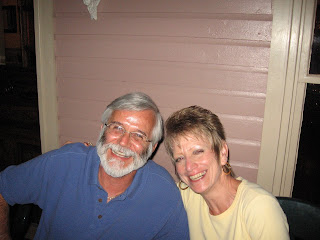This is the fourth post about what we did during our busy week in Berlin, Ohio in Amish country. That was the week of Independence Day so you can see how far behind I am with the blog. I have been trying to do one post a week and have several more posts about what we have been doing the last eight week.
The village of Sugarcreek bills itself as the Little Switzerland of Ohio with many quaint Swiss buildings. The biggest (literally) attraction is the Giant Cuckoo Clock. When it was built in 1963 it was recognized by the Guinness Book of World Records. It had fallen into disrepair until it was restored in 2007 and moved to its current location in 2012. The clock is worth a stop with a neat show every half hour.
The main street of Sugarcreek has many Swiss-like building facades but it lacks the Swiss feeling without the mountains. We did check out a couple local stores.
We have been to a number of places around the country where we have encountered the Amish culture. We find them to be enterprising people that have embraced the tourism that their 1800's lifestyle draws. This is a very common sight on the roads in the area, the charming clop clop of horses hooves and of course the not so charming residue they leave behind.
The old horse and buggy and the modern railroad crossing.
As with all Amish areas, farming is the most visible of their enterprises but they are also great craftsmen. Our RV was built in Indiana Amish country and the woodwork is wonderful. While there are many quilt shops, woodworkers, bulk food stores, the big draw here seems to be cheese. Guggisberg claims to have the best of baby Swiss out of 2,555 entries in the country. We bought several different kinds and found them all to be delicious.
It is neat seeing the beautiful farms that are truly a throwback to a different era but, personally, I don't get it. While they live the "simple" life, the Amish do seem to make exceptions to modern technology if it helps them make a living.
Just outside of Sugarcreek is the Age of Steam Roundhouse. I grew up by the railroad tracks and have always been fascinated by trains so this was a must stop for me. Unfortunately, because of a special event our visit did not live up to expectations.
The Age of Steam was the dream of Jerry Jacobson who bought the 90-mile Ohio Central Railroad System in 1988. After building it into a 525-mile system he sold it in 2008. He kept all the old equipment that included several steam locomotives and a few diesel engines. There are now 22 steamers in the collection.
To house all those locomotives he built a 18-stall roundhouse with 115 foot turntable. It was the first full size roundhouse built in the country since 1951. The restored engines are displayed in the roundhouse but, because of the special event, we did not get an up close tour. Steam engines are classified by the number of wheels they have. This 2-10-0 No. 401, built in 1928 in Philadelphia, was used on the Alabama, Tennessee and Northern Railway. The first number is the number of wheels on the front, next is the number of larger drive wheels and the last is the number in the back.
Canadian Pacific engine No. 1293, built in 1948 in Kingston, Ontario, had a 4-6-2 wheel arrangement. All steam engines pulled a tender that carried the fuel, usually coal but sometimes wood. These are the only locomotives we could see in the roundhouse the day we were there.
The Grand Trunk Western 4-8-4 No. 6325 was built in 1942 in Schenectady, New York and carried supplies and passengers during WWII. In 1948 in was used to pull President Truman's campaign train. Because of that, it was preserved and displayed in Battle Creek, Michigan in 1959.
The U.S. Navy 0-6-0 No. 4, built in Pittsburgh in 1912, was originally used as a switch engine in the Brooklyn Navy Yard.
The S-160 class U.S. Army 2-8-0 No. 2630 was built in Philadelphia in 1943. There were 2,120 S-160 class engines built during WWII that were used in Africa, North and South America and Europe. This one No. 2630 stayed stateside and was used in operation and maintenance training. It was not retired until 1972. It was very neat seeing all these old steam locomotives but I was very disappointed we did not get to tour the roundhouse.
The special event, Steam to Victory, was a WWII reenactment to honor the 75th anniversary of D-Day. Of course if you are going to do a reenactment you need a few Germans. This guy looks like Sergeant Schultz from Hogan's Heroes, "I see nothing".
The American soldiers encampment. Check out the 48 star flag.
US Army M-3 WWII half track.
US Army WWII tank.
The camps of both the Allies and Axis camps and more military equipment.
Of course every battle needs a medical unit to care for the wounded. We did not stay for the skirmish that depicted the allies capturing a German bunker.
We did enjoy our week in Amish country and getting a chance to check a few places off our to do list. We are having a great time in WashPA seeing many friends and family while doing last time visits with our doctors and dentist.


























































